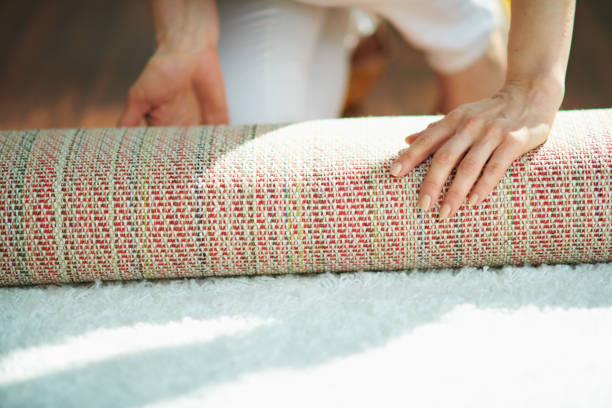When done correctly, layering rugs can enhance the personality of your home. It’s a bit tricky due to the vast number of rug styles available. Rugs can come in a variety of sizes, shapes, and colors. They may also have different patterns. By using our tips on how to layer rugs, you can better navigate this chaos and choose pieces that complement each other and enrich your home.
Variate Size and Orientation
You should layer rugs in different sizes and orientations to ensure that each rug can be seen. The carpet that you lay directly on the ground will be the base for all the other rugs. It should, therefore, cover the largest surface and be positioned straight with respect to furniture and walls. The rugs that are placed on top of the first rug can have different sizes, so you can still see some of the bottom ones around their edges.
Select secondary rugs that have the same ratio between length and width as your base rug, or you can introduce differences in their measurements. You can play around with the angles of placement to ensure that the secondary rug complements the base rug.
Keep to a color scheme.
It is important to stick with a specific color scheme when decorating your home. This tip also applies to how you layer rugs. Find a balance between adding color variety and keeping your room consistent so that it doesn’t look too chaotic. This balance can be achieved by keeping in mind the overall color scheme of your room when choosing rugs. If your room is dominated by blues, beige, whites, and green hints, then you can use this color palette to guide your rug selection. You could choose an entirely neutral rug and another one with some shades of blue. You could also use a rug design that features green as an accent, amongst other less-loud designs.
Mix Patterns Neatly
The use of patterned decorations is a great way to bring life into a room, but it’s also less easy and safer than using plain ones. The layering of rugs is appealing because you can combine different patterns and create a focal point or artistic backdrop for your interior space. You need to take into account the overall busyness of the space. To keep your layering ensemble stylish, you may want to choose simpler rugs if you have already chosen patterned furniture or wallpaper. If your room has a limited number of patterns, you can select rugs with more vibrancy. As you juxtapose patterns, use similar colors to soften the effect and keep your room looking stable.

